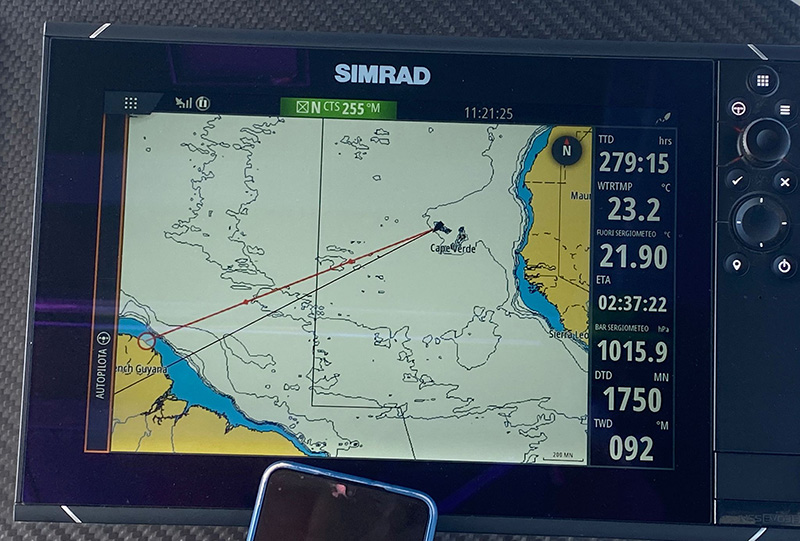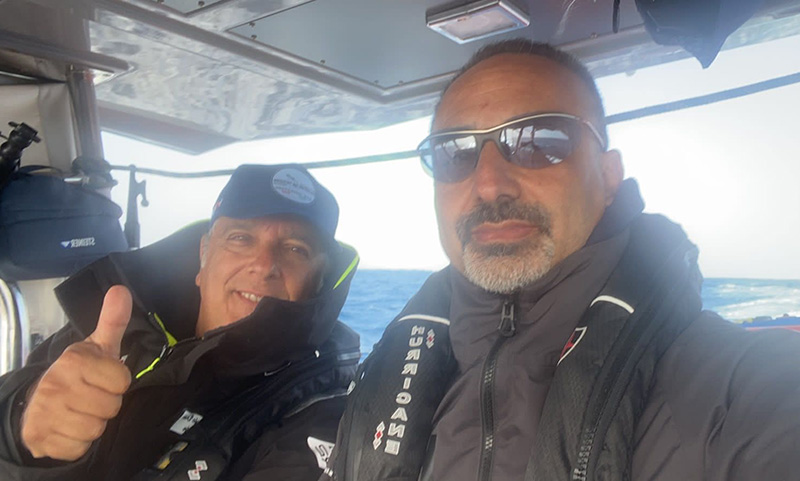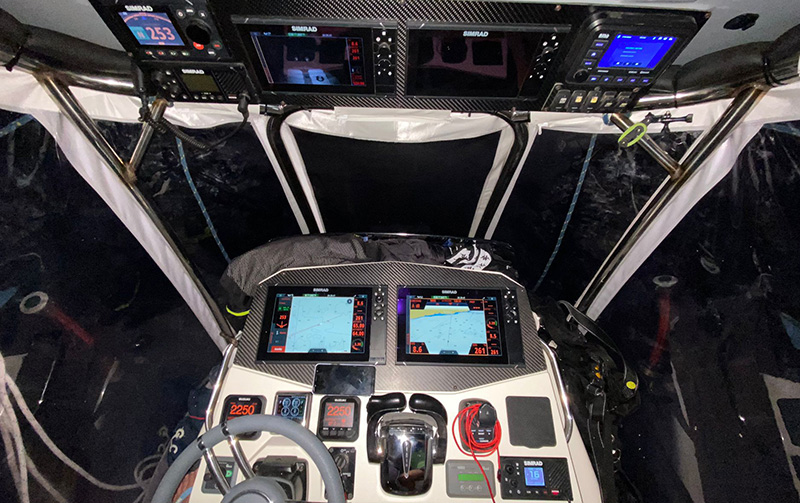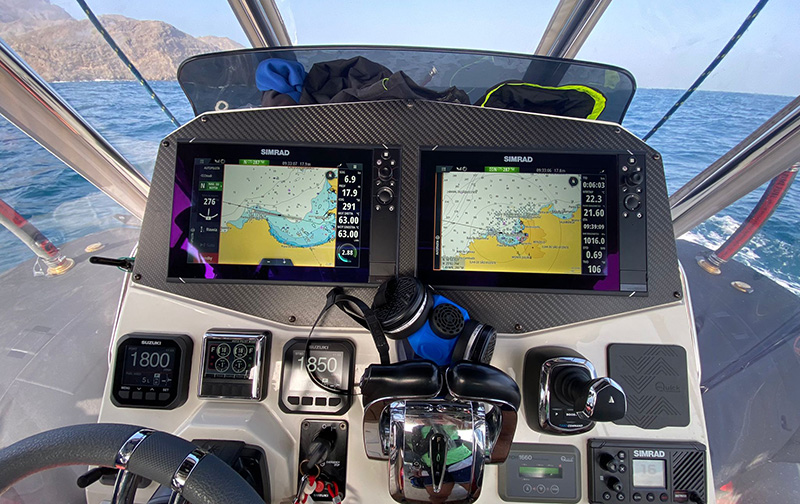Life on board
Simrad® Electronics Crucial for Davì on Longest Leg
Last week, Captain Sergio Davì finished the longest leg of his voyage as he completed his transatlantic crossing from the West African islands of Cape Verde to French Guyana in South America. In all, Sergio covered 1770-nautical miles over six days as he averaged about 300 nautical miles daily.


This leg was undoubtedly more different than the others – a result of both the distance he covered and the hazards of the open ocean. Given the extreme weather conditions featuring swells up to 10 feet (2-3 meters), Sergio decided to bring a co-pilot on board: Teo Aiello, co-owner of Nuova Jolly Marine, makers of his 38-foot Nuova Jolly RIB. And the key through it all was Sergio’s reliance on his electronics - more than at any other leg of the trip thus far. Always nice to have a captain’s feedback that he’s thrilled and very enthusiastic about the performances of his Simrad® electronics during a crossing.
Sergio needed to reduce speed to maximize engine efficiency and not waste fuel, for starters. His high-performance NSSevo3S™ multifunction display provided him with all the necessary information on his engines, systems and performance.
This leg also saw him take more naps and lie down for longer stretches to stay physically rested. For that, the crew relied on the Simrad® AP™48 AutoPilot to stay on course and, by setting up the guard zones on their Halo24 Dome Radar, ensured instant alerts to highlight them to any potential dangers. Last summer’s software update for Simrad Halo dome radars delivered significant upgrades with key safety features and visual enhancements.
Beyond sleeping, the AutoPilot was also crucial during another phase of the leg - during the delicate fuel transfer from the auxiliary tanks to the fuel tanks connected to his engines. This operation couldn’t be carried out with the RIB adrift at sea but rather with the engines running and the boat set on a straight course – a task for which setting his AutoPilot was crucial but also one that was made easier with the addition of Aiello on-board.


Lastly, nothing played a more significant part during this ocean crossing than reading weather reports from his C-MAP® charts. Always connected to nature around him, Sergio has a close connection to the sea and deep respect for the power of nature’s forces. Using wind direction and speed with forecasts of wave sizes gave him a good reading of conditions ahead as he traversed the Atlantic. In addition to interpreting critical weather data, Sergio was also keenly aware of the different weather patterns and changing conditions he passed through, so he could make good use of the North Atlantic trade winds to skirt the doldrums and equator to the south.
Six days after setting off from Mindelo, Cabo Verde, Sergio saw the outline of the Dreyfus Tower beckoning him to the small port town of Kourou, French Guyana (pop. 25,000) arriving in the afternoon. But, even while resting up for a week in Kourou and enjoying the comforts of a bed, Sergio’s adventure didn’t stop there. One of the essential partnerships in this journey is collaborating with two prominent marine biology research universities in Italy to collect water samples to be analyzed for microplastics and heavy metals. Look out for more details on this story.

















